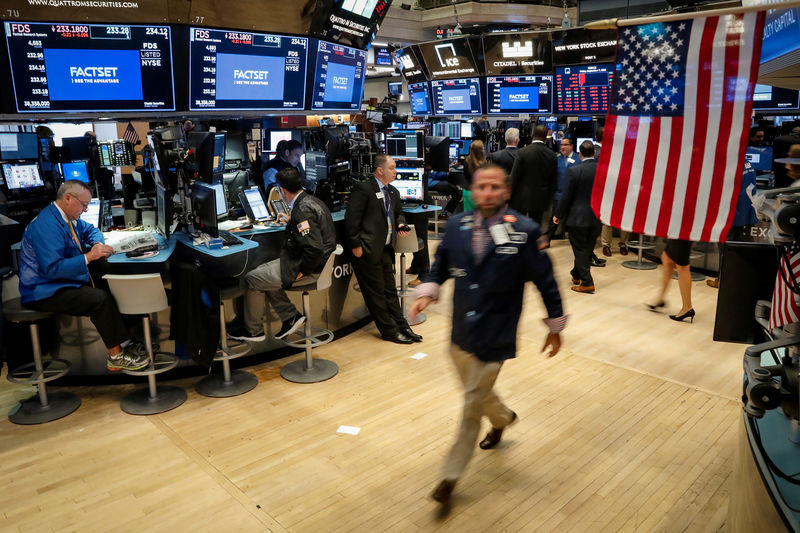By Noel Randewich
SAN FRANCISCO (Reuters) - Alphabet (NASDAQ:GOOGL) Inc, Facebook Inc (NASDAQ:FB), Netflix Inc (NASDAQ:NFLX) and others will be in focus on Sept. 24 when they are moved out of the tech and consumer discretionary sectors into a deepened pool of communication and media stocks.
In the largest-ever shakeup of the Global Industry Classification Standard (GICS), the telecommunication services sector will be renamed "communication services" and include 18 companies pulled from consumer discretionary and technology, including Netflix, Walt Disney (NYSE:DIS) Co and Twitter Inc (NYSE:TWTR).
S&P Dow Jones Indices and MSCI have maintained the widely used business classification system since 1999, and the rearrangement is meant to reflect how the tech, media and consumer industries have evolved.
Stocks being shifted account for about 8 percent of the S&P 500, and S&P subindexes will reflect the changes once trading starts on Sept. 24.
The communication services sector will include three out of the four so-called FANG stocks - Facebook, Amazon.com Inc (NASDAQ:AMZN), Netflix and Google-owner Alphabet - even though investors widely consider them the leaders of the tech rally that powered the stock market higher in recent years.
Alphabet and Facebook will leave technology and Netflix will by moved out of consumer discretionary to join to the renamed sector. Amazon will stay put in consumer discretionary.
Graphic: S&P 500 current sectors - https://reut.rs/2CHuALD
The technology sector's weight in the S&P 500 will shrink to 20 percent from 26 percent.
Its largest remaining constituents will be Apple Inc (NASDAQ:AAPL), Microsoft Corp (NASDAQ:MSFT), Visa Inc (NYSE:V) and Intel Corp (NASDAQ:INTC). After the shuffle removes the influence of some of the biggest companies from the sector's performance, chipmakers, cloud-computing sellers and other tech constituents may have more of a chance to shine.
Graphic: S&P 500 future sectors - https://reut.rs/2CEBuBd
Exchange-traded funds (ETFs) that passively track sector indexes have about $89 billion invested in technology, more than any other sector, according to data from Thomson Reuters Lipper.
Trading could be volatile on Friday for stocks caught in the shakeup as some of those tech ETFs, along with index funds focused on consumer discretionary and telecoms, adjust their portfolios.
But some of the heavy lifting is already complete.
Leading fund provider Vanguard Group started transitioning its sector ETFs in the June quarter, while State Street Global Advisors has already launched a new fund tracking communication services.
The Communication Services Select Sector SPRD Fund has fallen 3 percent since its June debut, partly because Facebook, its second-largest holding, tumbled 16 percent on growing regulatory concerns.
Communication services will account for 11 percent of the S&P 500, up from less than 2 percent in its current configuration as the telecom sector.
Graphic: S&P 500 future communications services - https://reut.rs/2CFLIBk
Consumer discretionary will make up 11 percent of the S&P 500, down from 13 percent. Amazon's weight within consumer discretionary will rise to 34 percent from 27 percent, with Home Depot Inc (NYSE:HD) and McDonald's Corp the next largest components.
Graphic: S&P 500 current telecoms - https://reut.rs/2CHvx6F
S&P 500 communication services companies will have an aggregate valuation of 18 times expected earnings after the shakeup, compared to 10 times for the current S&P 500 telecom constituents: AT&T Inc (NYSE:T), CenturyLink Inc (NYSE:CTL) and Verizon Communications Inc (NYSE:VZ).
Graphic: S&P 500 current consumer discretionary: https://reut.rs/2CCRL9y
Graphic: S&P 500 future consumer discretionary - https://reut.rs/2CDj2sM
Graphic: S&P 500 current IT index - https://reut.rs/2CEBHnS
Graphic: S&P 500 future IT index - https://reut.rs/2CGD31s

Graphic: Valuations and earnings expectations - https://reut.rs/2CC3wNH